

Bicycle theft is a growing concern for cyclists worldwide, and one of the most common questions people ask is whether bike thieves target only expensive models or if cheap bikes are also at risk. Many assume that a low-cost bicycle is a safer option because it lacks the high-end appeal of premium brands. But is this assumption correct? Do bike thieves steal cheap bikes as often as expensive ones?
This article explores the factors influencing bike theft, the reality behind theft trends, and how to secure your bicycle—whether it's budget-friendly or high-end.
Do Thieves Prefer Expensive Bikes?
At first glance, it seems logical that thieves would target expensive bikes due to their high resale value. Premium brands, carbon fiber frames, and high-performance components are certainly desirable. However, this doesn’t mean that cheap bikes are safe from theft.
Why Expensive Bikes Are Targeted
High Resale Value – Stolen high-end bicycles fetch a higher price on the black market.
Specialized Parts – Some thieves steal bikes just to sell individual components, which can be valuable.
Demand from Enthusiasts – Expensive bikes are in demand, making them easier to sell quickly.
Organized Theft Rings – Some theft groups specifically target luxury bicycles for international resale.
Despite these reasons, data shows that cheap bikes are also frequently stolen.
Are Cheap Bikes Really Safer from Theft?
While premium bicycles attract professional thieves, cheap bikes are often easier targets. Here’s why:
Why Thieves Also Steal Cheap Bikes
Less Security Measures – Owners of cheap bikes often use weaker locks or leave their bikes unsecured.
Quick Getaways – Thieves sometimes steal any available bike for immediate transport rather than resale.
Parts Resale – Even budget bicycles contain valuable components such as wheels, seats, and handlebars.
Impulse Theft – Many cheap bike thefts occur because of opportunistic criminals, not professional bike thieves.
A thief looking for an easy opportunity might not care about a bike’s price tag if it's easily accessible.
What Types of Cheap Bikes Are Stolen Most?
Not all budget bikes are equally attractive to thieves. Some are more likely to be targeted than others.
Commonly Stolen Budget Bikes
Well-Known Brand Budget Models – Even entry-level bikes from trusted brands can be targeted due to their reliability and resale potential.
Bikes with Weak Locks – If a bike is locked with a flimsy cable lock, it's a prime target.
Poorly Secured Public Bikes – Bikes left in isolated areas or without proper locks are easy thefts.
Bicycles in High-Crime Areas – Any bike, regardless of value, is at risk in locations with frequent theft reports.
Older, Well-Maintained Bikes – Some older models are desirable because they are built to last and easier to repair.
If a thief sees a bike that is easy to take, they won’t hesitate—whether it costs £100 or £1,000.
Where Are Cheap Bikes Most Likely to Be Stolen?
Bike theft isn't just about the bike itself; location plays a crucial role. Some areas are more dangerous than others.
High-Risk Areas for Bike Theft
Public Bike Racks with No Surveillance – Open areas with little security attract thieves.
Train and Bus Stations – Transit hubs are hot spots for quick thefts.
University Campuses – Student bikes are often targeted because they are left unattended for long periods.
Shopping Centres – Thieves take advantage of distractions in busy locations.
Residential Buildings with Open Access – Unlocked bike sheds or shared garages are vulnerable.
Even in low-theft areas, a poorly secured bike can become a target.
How to Prevent Your Cheap Bike from Being Stolen
A cheap bike may not seem worth protecting, but replacing even a budget bicycle is an inconvenience. Here’s how to keep your bike safe:
1. Use a High-Quality Lock
Invest in a U-lock or heavy-duty chain lock rather than a flimsy cable lock.
Use two locks if possible—one for the frame and one for the wheels.
2. Lock Your Bike Correctly
Lock your bike to an immovable object such as a bike rack or metal post.
Secure both the frame and the wheel to prevent parts theft.
Avoid locking only the wheel, as thieves can detach it and steal the rest of the bike.
3. Park in Secure Locations
Choose well-lit, high-traffic areas with surveillance cameras.
Use designated bike racks instead of poles or fences.
Avoid leaving your bike in one place for extended periods.
4. Remove Valuables and Quick-Release Parts
Take off lights, saddlebags, and accessories when leaving your bike.
If possible, remove the front wheel or saddle to deter theft.
5. Register and Mark Your Bike
Use bike registration services to make theft recovery easier.
Mark your bike with an identifiable engraving or sticker to discourage resale.
What to Do If Your Cheap Bike Gets Stolen
Even with precautions, theft can still happen. If your bike is stolen, take these steps:
1. Report the Theft Immediately
Contact local police and file a theft report with details of the bike.
Check security cameras if the theft occurred near a monitored area.
2. Search Online Marketplaces
Look on Craigslist, Facebook Marketplace, and eBay for listings of similar bikes.
Use stolen bike databases like BikeRegister to check for recovered bikes.
3. Alert Local Bike Shops and Forums
Notify local cycling groups to spread awareness.
Visit pawn shops or second-hand stores where thieves might try to sell the bike.
4. Consider Bike Insurance
If theft is common in your area, bike insurance can provide financial protection.
Final Thoughts: Are Cheap Bikes Stolen?
Yes, bike thieves steal cheap bikes. While expensive models attract professionals, budget bikes are often easier targets due to poor security, quick resale value, and opportunistic theft. Whether you own a £150 bike or a £1,500 model, proper locking techniques, secure parking, and bike registration are essential to preventing theft.